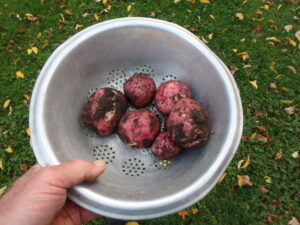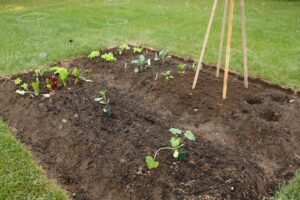Get Ready to Grow Vegetables This Summer
- All vegetables do best in full sun. The minimum amount of sun is 6 hours, though you can grow herbs and greens in 4 hours.
- Good soil is very important. Yes, heavy clay or sandy soil will produce some veggies, but improving it with compost will improve your results. Buy some, work it in.
- You shouldn’t use any chemicals. Not insecticides, not herbicides, not chemical fertilizers. The fertilizers can be replaced with compost and organic bagged fertilizers that are made with all natural ingredients and minerals. Your plants will do fine without chemicals, and will be healthier for you to eat.
- Adequate moisture is also key. Newly planted seeds or seedlings cannot dry out completely and survive. Later on, when mature tomatoes or beans have roots deep in your soil, they can endure a period of drought. But if they start to wilt, they are in trouble and need a soaking. Visit your garden every day to see how your plants are doing. Buy a hose long enough to reach the garden.
- Weeds are not your friends. They compete for water and soil nutrients, and if big enough, sunshine. For most small gardens, you can keep weeds under control in 10 minutes of weeding – if you do so every day. Mulching will help with both moisture levels and weed control.
What should you grow? If you’re worried about having enough food, grow potatoes. So long as you don’t have a swarm of potato beetles eating the leaves, or a blight (like the one that did in the Irish) potatoes are sure winners. They will provide calories better than anything else you can grow, and they store well. I’m still eating mine from 2019.
Next on my list of veggies to grow is kale. It produces a lot of greenery that can be added to any soup, stew or stir fry, adding vitamins A to Z. (Yes, I know, there is no vitamin Z). Unlike lettuce or spinach, kale freezes well. You can pack a lot of kale into a quart zipper bag and put it away for days you can’t to go the store. It’s great in a smoothie, too. I’ve never had a pest or disease on my kale.
Then there are the winter squash: Blue Hubbard and Waltham butternut will store well for many months – all winter, and into the next season. They can be stored on a shelf in the pantry, or cooked and frozen. Either way, they are nutritious, tasty, and very easy to grow. But they have long vines, and need space. Zucchini for summer eating are great, very productive, and take less space than winter squash.
So how do you actually prepare a garden for planting? Pick a spot in the middle of the lawn. Get rid of the grass in the plot: Use a shovel or a garden fork to dig it out. Shake the roots to save the soil from the roots. This is hard work. Plan on spending half an hour every day digging out sod until the job is done.





